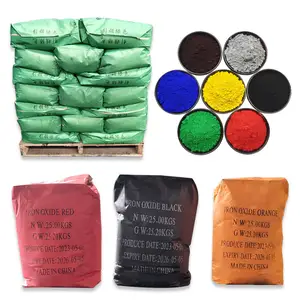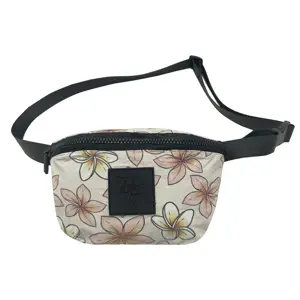Phổ biến trong ngành của bạn


Hiệu quả nhất Hữu Cơ perylene S-1086 CAS: 83524-75-8 sắc tố đen 32 được sử dụng trong xe sơn xây dựng phòng
2.923.003 ₫ - 3.304.264 ₫
Đơn hàng tối thiểu: 1 Kilogram







Bán buôn Hữu Cơ perylene CAS không có 83524 PB 32 sắc tố đen 32 cho sơn và lớp phủ
12.709 ₫ - 38.127 ₫
Đơn hàng tối thiểu: 50 Gram







Oxit sắt đỏ/Đen/vàng/xanh Oxit sắt sắc tố cho xi măng bê tông gạch màu
16.522 ₫ - 19.064 ₫
Đơn hàng tối thiểu: 1 Kilogram







Cường độ cao sắc tố đen 32 cho công nghiệp lớp phủ và sơn CAS không 83524
2.668.829 ₫ - 3.177.177 ₫
Đơn hàng tối thiểu: 1 Kilogram



Cường độ cao sắc tố đen 32 cho Sơn Công Nghiệp và lớp phủ CAS số: 83524-75-8
2.923.003 ₫ - 3.253.429 ₫
Đơn hàng tối thiểu: 1 Kilogram







Đen PU Màu, Thuốc Nhuộm Sắc Tố Chất Lượng Tốt Nhà Máy Giá Tự Nhiên Thuốc Nhuộm Màu Và Silicon Màu Sắc Tố Màu Sắc
70.661 ₫ - 75.490 ₫
Đơn hàng tối thiểu: 35 Kilogram






Dimablack Carbon 218 đen cho PU silicon dính keo Sealant thay thế M280 bp280 sắc tố
101.670 ₫ - 203.340 ₫
Đơn hàng tối thiểu: 1000 Kilogram






Hot Bán Đen Để Đỏ Quang Học Biến Màu Tắc Kè Hoa Pigment Sơn Xe Coating Pigment Cho Ô Tô Mục Đích
94.045 ₫ - 96.587 ₫
Đơn hàng tối thiểu: 10 Gram






Matte Công Nghiệp Nhựa Colorant Pigment Indigo Bột Sắt Oxit Màu Sắc Tố Cho Sơn Nước Vôi Rửa Nghệ Thuật Sơn Tường
10.167 ₫ - 25.418 ₫
Đơn hàng tối thiểu: 10 Kilogram
Vận chuyển mỗi chiếc: 1.383.216 ₫






Bán Chạy Màu Cam Mắt Duochrome Lỏng Màu Phấn Mắt Loại Mỹ Phẩm
75.999 ₫ - 101.416 ₫
Đơn hàng tối thiểu: 100 Gram






Bột Màu Nhiều Crôm Nhựa Epoxy Bột Màu Đỏ Duochrome Màu Đen Cho Sơn Xe Hơi
80.065 ₫ - 96.587 ₫
Đơn hàng tối thiểu: 100 Gram
Các danh mục hàng đầu
Giới thiệu về sắc tố silicon đen
Dù cho một bữa tiệc cầu kỳ, cho văn phòng hay cho một chuyến đi chơi bình thường, hãy tìm sự hoàn hảo. sắc tố silicon đen trên Alibaba.com .. sắc tố silicon đen đã trở nên không chỉ là một vật dụng có chức năng để đựng các vật dụng hàng ngày. Bây giờ chúng được coi là một phụ kiện thiết yếu và thường được phối hợp với phần còn lại của trang phục của một người để có một cái nhìn thời trang. Những cái này. sắc tố silicon đen thường chứa nhiều phần tô điểm và phần tử thiết kế để nâng cao thương số phong cách của một người.
Các. sắc tố silicon đen được cung cấp trên Alibaba.com được làm từ da hoặc vải có chất lượng tốt nhất, để đảm bảo giao diện và cảm nhận cao cấp. Những cái này. sắc tố silicon đen có túi, bao, khóa kéo và tay cầm được thiết kế tốt để cung cấp cho người dùng sự tiện lợi tối đa .. sắc tố silicon đen có cả kiểu dáng truyền thống và cổ điển cũng như những mẩu tuyên bố kỳ quặc có khả năng thu hút sự chú ý. Những người đam mê thời trang có thể sẽ rất vui mừng bởi hàng loạt các sản phẩm được cung cấp.
sắc tố silicon đen có nhiều kích thước và hình dạng khác nhau. Chúng bao gồm từ những món cực kỳ nhỏ dành cho mục đích trang trí đến những món lớn hơn có nhiều vách ngăn và túi cho những người cần mang nhiều đồ .. sắc tố silicon đen có sẵn ở dạng rắn cũng như được đính đá quý, đá, và thậm chí cả kim loại quý .. sắc tố silicon đen có thể cứng và không linh hoạt hoặc được làm từ vật liệu mềm và co giãn, tùy thuộc vào nhu cầu của người dùng. Chúng có thể trong suốt hoặc có màu đồng nhất và có thể được làm thủ công cẩn thận bằng gương và các vật trang trí khác.
Tăng kho ngoại hình của bạn với phạm vi đáng yêu và hấp dẫn này. sắc tố silicon đen có sẵn trên Alibaba.com. Với các ưu đãi và chiết khấu vô cùng hấp dẫn, hãy mua bao nhiêu tùy thích mà không lo vượt quá ngân sách của bạn .. sắc tố silicon đen nhà cung cấp và người bán buôn cũng có thể lấy những mặt hàng đáp ứng tốt nhất sở thích của họ với mức ưu đãi tuyệt vời.
Các. sắc tố silicon đen được cung cấp trên Alibaba.com được làm từ da hoặc vải có chất lượng tốt nhất, để đảm bảo giao diện và cảm nhận cao cấp. Những cái này. sắc tố silicon đen có túi, bao, khóa kéo và tay cầm được thiết kế tốt để cung cấp cho người dùng sự tiện lợi tối đa .. sắc tố silicon đen có cả kiểu dáng truyền thống và cổ điển cũng như những mẩu tuyên bố kỳ quặc có khả năng thu hút sự chú ý. Những người đam mê thời trang có thể sẽ rất vui mừng bởi hàng loạt các sản phẩm được cung cấp.
Tăng kho ngoại hình của bạn với phạm vi đáng yêu và hấp dẫn này. sắc tố silicon đen có sẵn trên Alibaba.com. Với các ưu đãi và chiết khấu vô cùng hấp dẫn, hãy mua bao nhiêu tùy thích mà không lo vượt quá ngân sách của bạn .. sắc tố silicon đen nhà cung cấp và người bán buôn cũng có thể lấy những mặt hàng đáp ứng tốt nhất sở thích của họ với mức ưu đãi tuyệt vời.




























